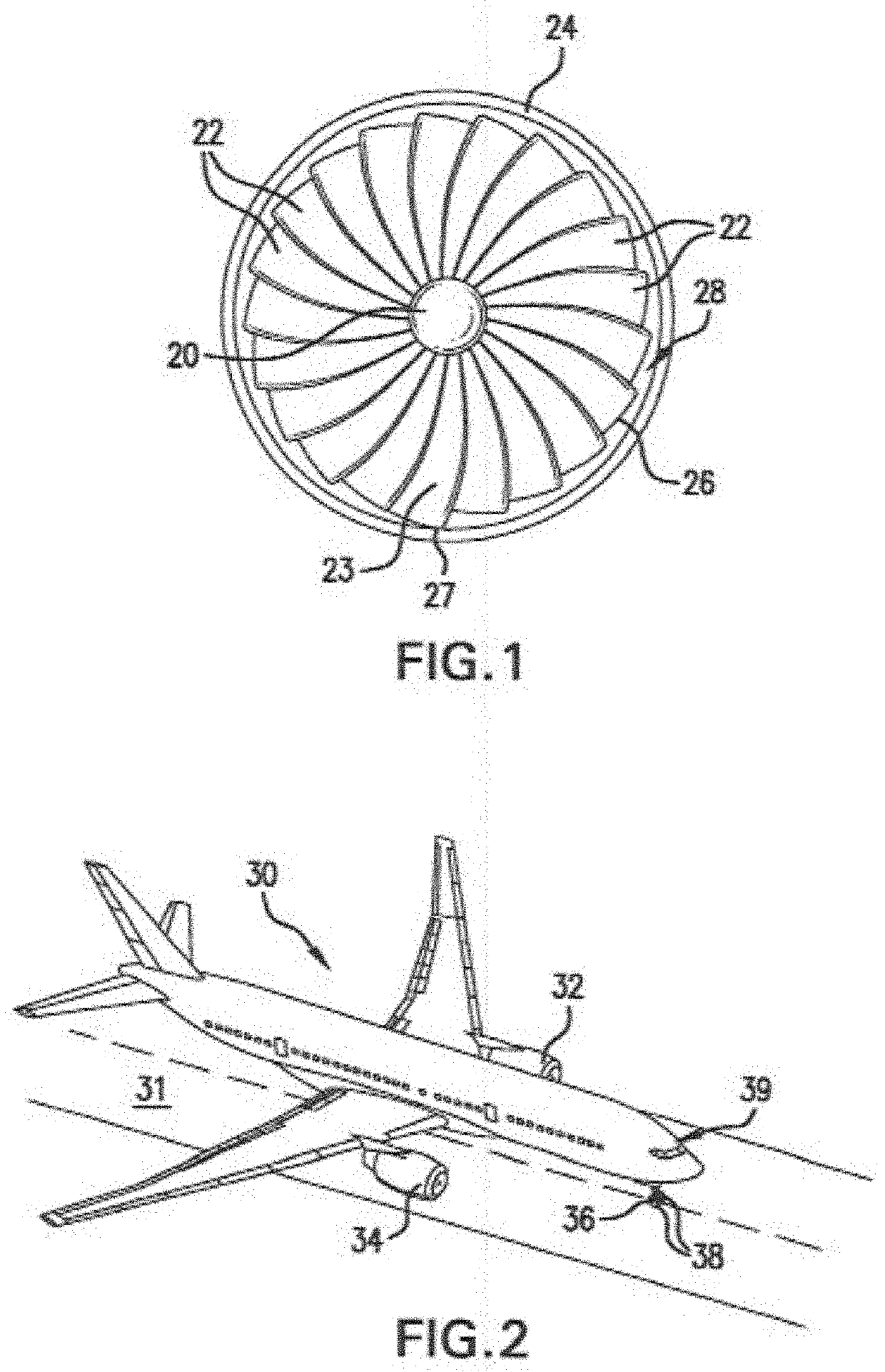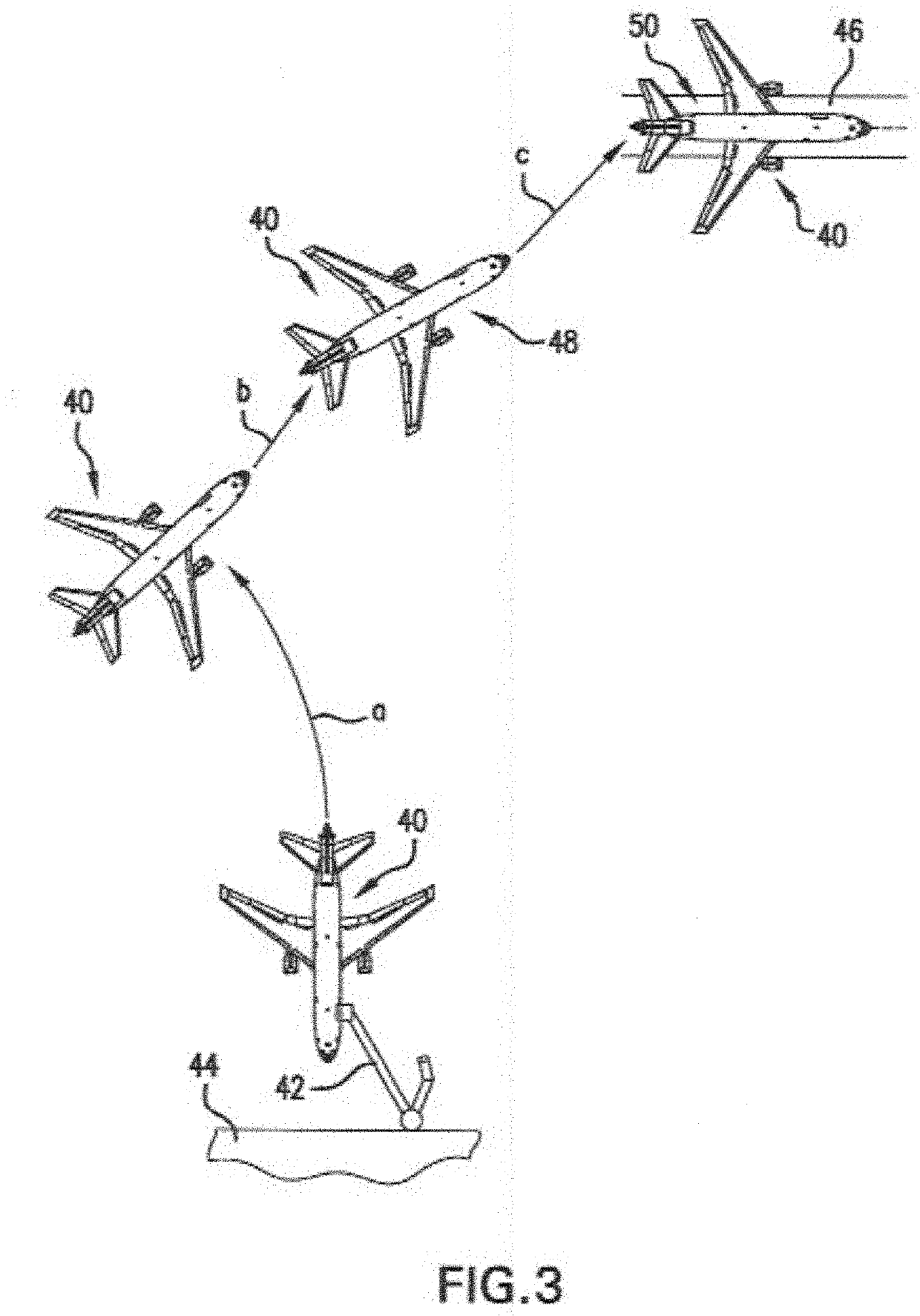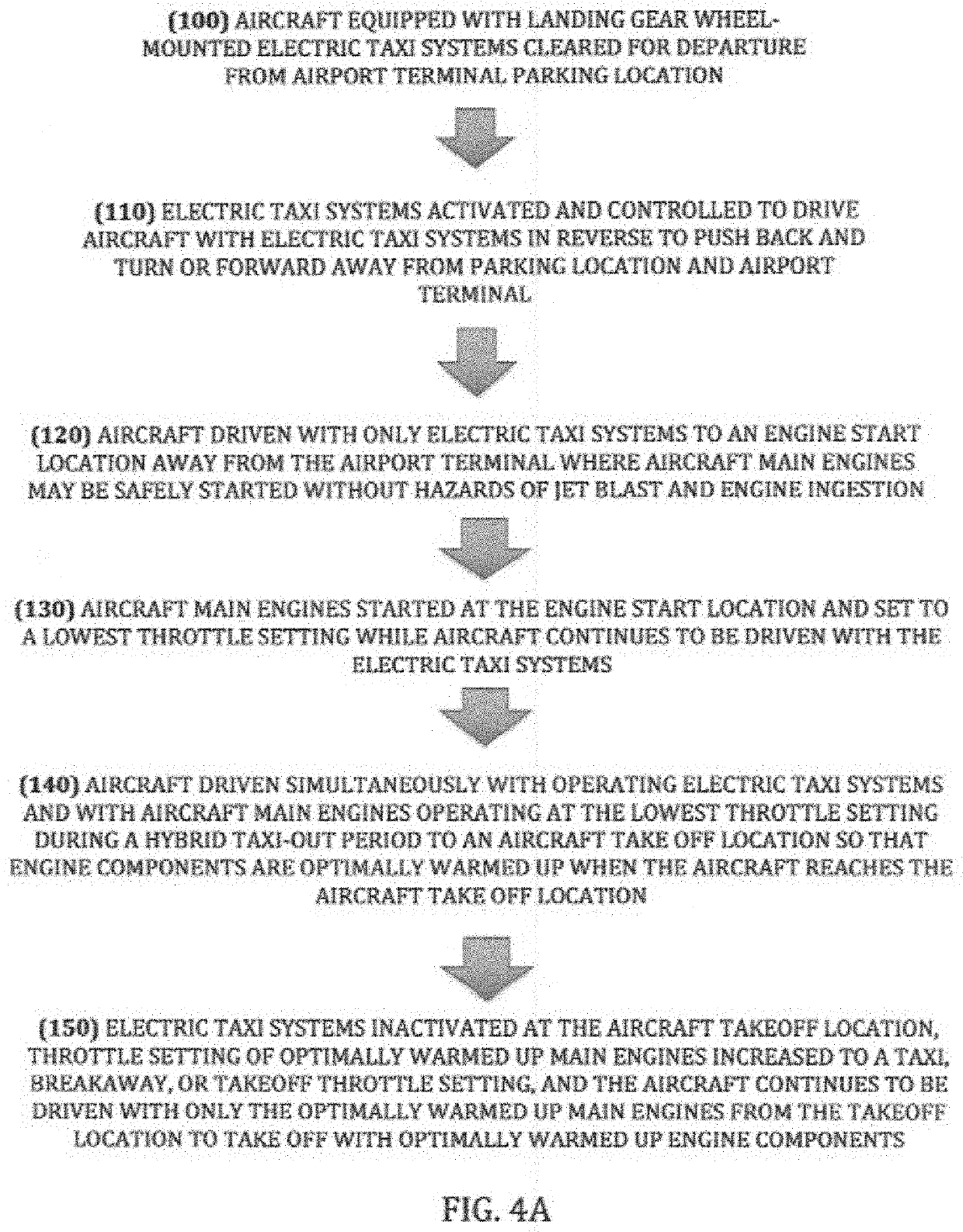Method for Improving Aircraft Engine Operating Efficiency
a technology for aircraft engines and operating efficiency, applied in the direction of energy-efficient operation measures, aircraft power plants, alighting gear, etc., can solve the problems of reducing the time available for warming up and cooling down aircraft engines, minimizing this clearance, and engine operating efficiency, so as to increase the total time the aircraft is on the ground, the effect of prolonging the warm up and cooling tim
- Summary
- Abstract
- Description
- Claims
- Application Information
AI Technical Summary
Benefits of technology
Problems solved by technology
Method used
Image
Examples
Embodiment Construction
[0026]As discussed above, current airport ground operating procedures and the pressures resulting from minimizing aircraft time on the ground between landing and take off may not provide an optimum, or even a sufficient, amount of time to adequately warm up aircraft engines. An adequate engine warm up time prevents damage to engine components, for example rotor bowing, where distorted rotors cannot maintain optimum rotor blade tip clearance during flight. Engine operating efficiency during flight may be reduced when aircraft engine components are damaged or distorted as a result of an improperly warmed up or cooled down engine. Aircraft engine designers must presently design and configure aircraft engines to conform to engine start times imposed by airport operators. At most airports, the time between when both aircraft engines are started prior to take off and the subsequent application of a take off throttle setting is currently about 2.5 to 2.67 minutes (150 to 160 seconds), alth...
PUM
 Login to View More
Login to View More Abstract
Description
Claims
Application Information
 Login to View More
Login to View More - R&D
- Intellectual Property
- Life Sciences
- Materials
- Tech Scout
- Unparalleled Data Quality
- Higher Quality Content
- 60% Fewer Hallucinations
Browse by: Latest US Patents, China's latest patents, Technical Efficacy Thesaurus, Application Domain, Technology Topic, Popular Technical Reports.
© 2025 PatSnap. All rights reserved.Legal|Privacy policy|Modern Slavery Act Transparency Statement|Sitemap|About US| Contact US: help@patsnap.com



